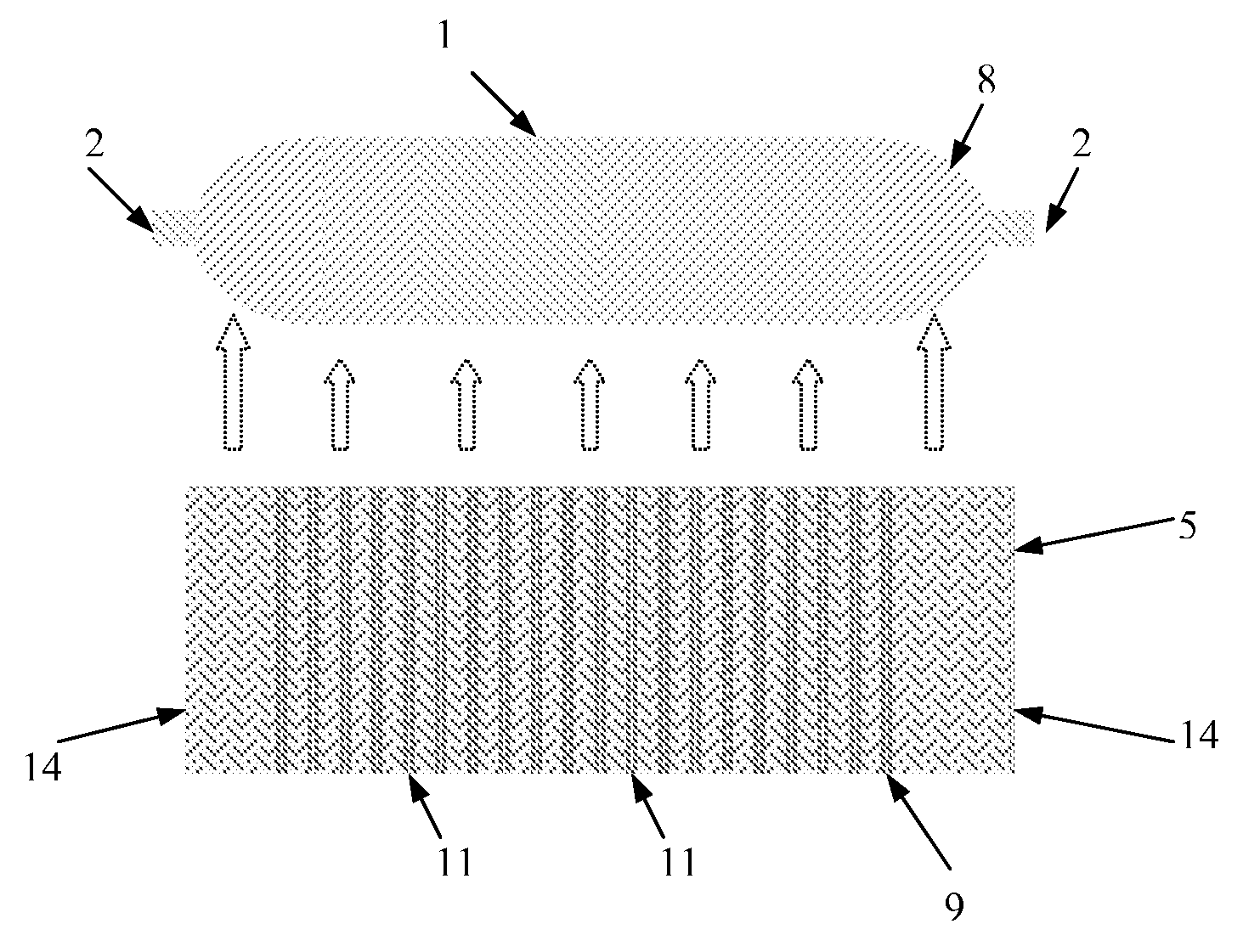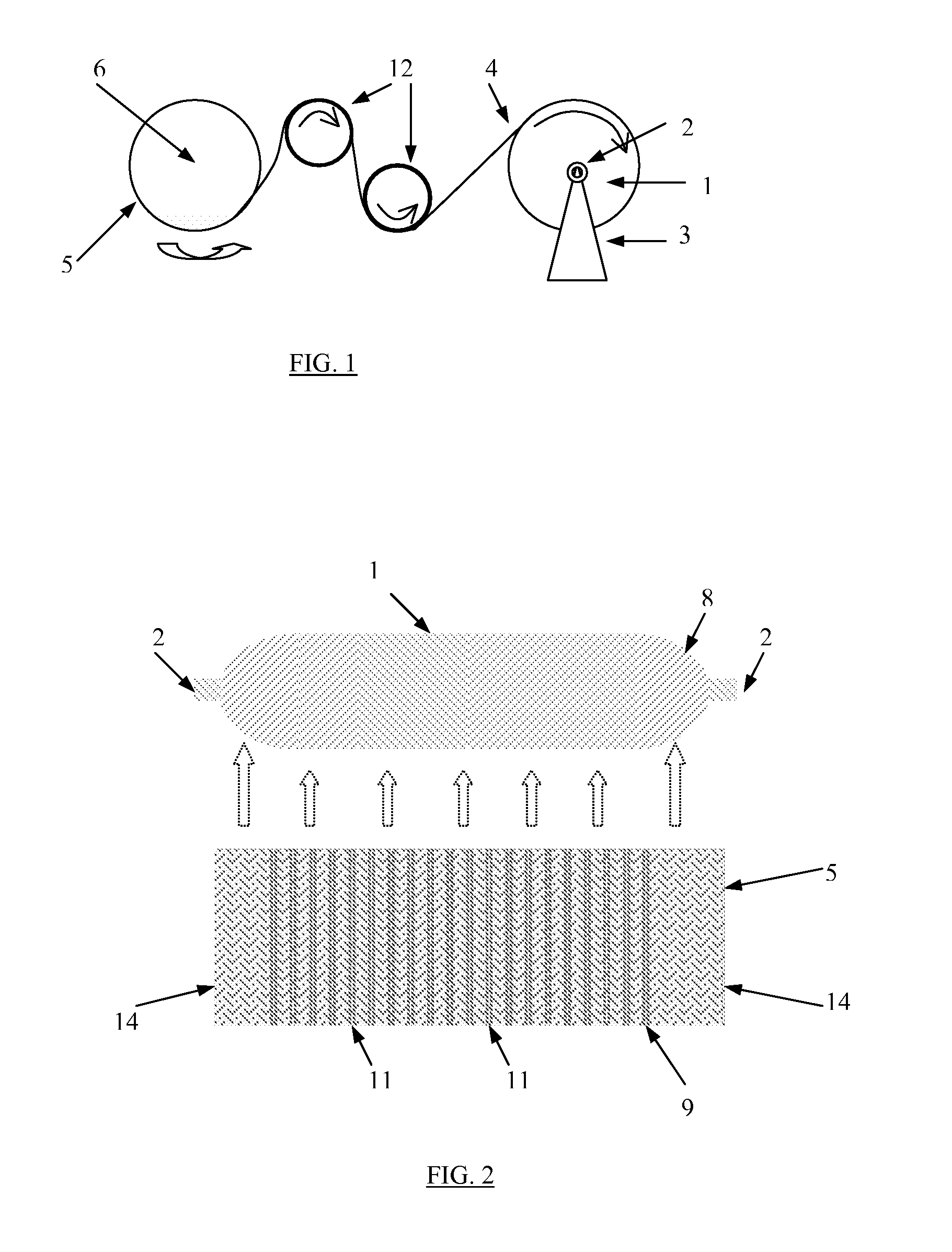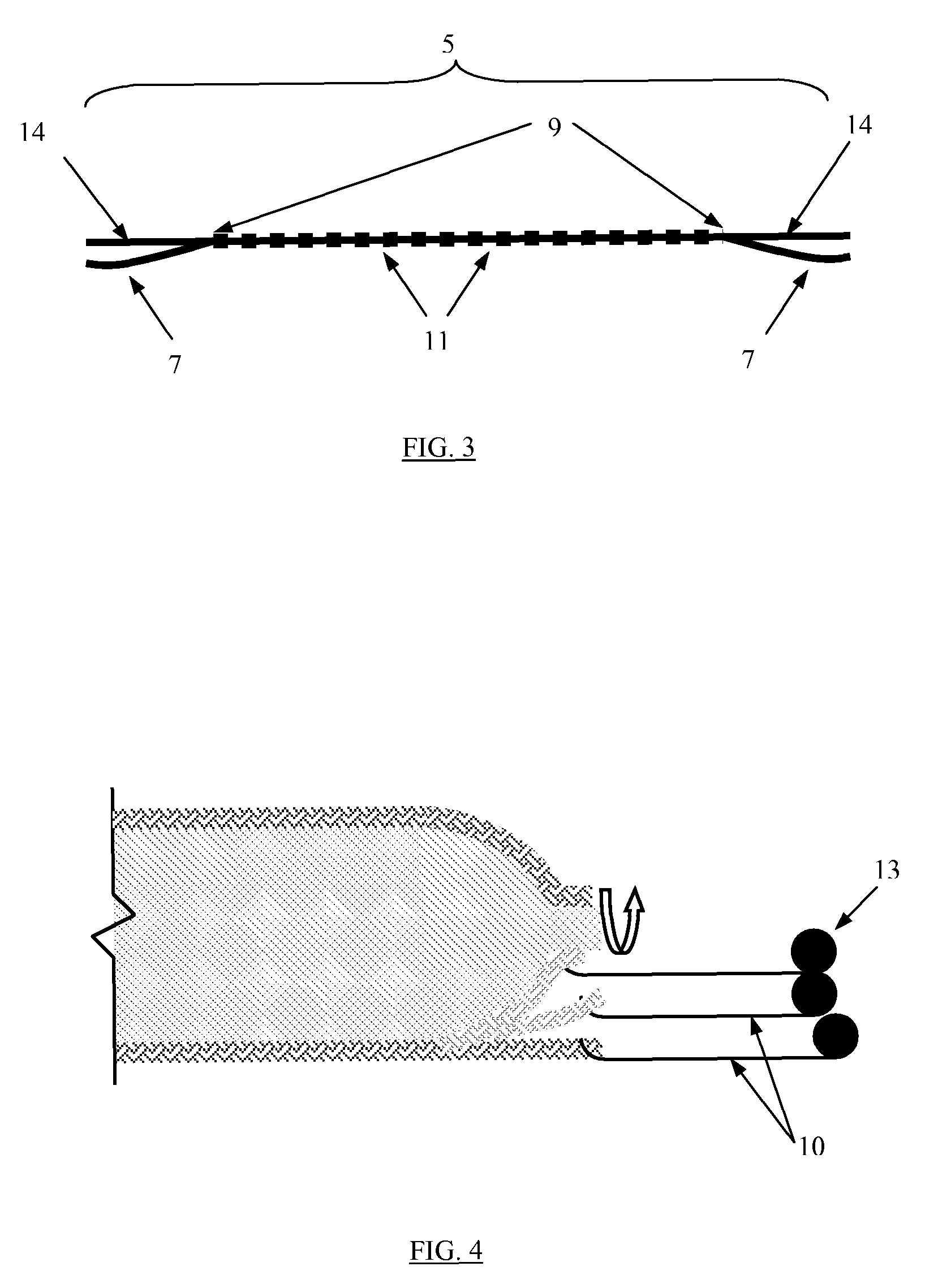Process for the rapid fabrication of composite gas cylinders and related shapes
a gas cylinder and composite technology, applied in the direction of mechanical equipment, other domestic objects, braids, etc., can solve the problems of inability to meet real-world production requirements, insufficient heat dissipation, and insufficient pressure vessel pressure, so as to achieve rapid thermal response, eliminate undesirable preform wrinkles, and improve the tension effect of the preform
- Summary
- Abstract
- Description
- Claims
- Application Information
AI Technical Summary
Benefits of technology
Problems solved by technology
Method used
Image
Examples
Embodiment Construction
[0016]The following discussion of the embodiments of the invention directed to a rapid manufacturing process for a compressed hydrogen tank is merely exemplary in nature, and is in no way intended to limit the invention or its applications or uses. However, as will be appreciated by those skilled in the art, the process has application to produce tanks other than compressed hydrogen tanks and to produce structures with liners applicable in a number of fields utilizing composites as the preferred material.
[0017]An invention is developed which consists of several process steps, intricately linked, in which no single step is more than 10-20 minutes in total cycle time, thereby resulting in a part fully completed coming off each line every 10-20 minutes.
[0018]A cylinder liner 1 is formed through one of several options, using either superplastic forming of metal pipe with threaded ends, spin forming of cylinders from metal sheet or tubing, or plastic blow-molding or injection molding to ...
PUM
| Property | Measurement | Unit |
|---|---|---|
| cure time | aaaaa | aaaaa |
| stress concentrations | aaaaa | aaaaa |
| burst pressures | aaaaa | aaaaa |
Abstract
Description
Claims
Application Information
 Login to View More
Login to View More - R&D
- Intellectual Property
- Life Sciences
- Materials
- Tech Scout
- Unparalleled Data Quality
- Higher Quality Content
- 60% Fewer Hallucinations
Browse by: Latest US Patents, China's latest patents, Technical Efficacy Thesaurus, Application Domain, Technology Topic, Popular Technical Reports.
© 2025 PatSnap. All rights reserved.Legal|Privacy policy|Modern Slavery Act Transparency Statement|Sitemap|About US| Contact US: help@patsnap.com



